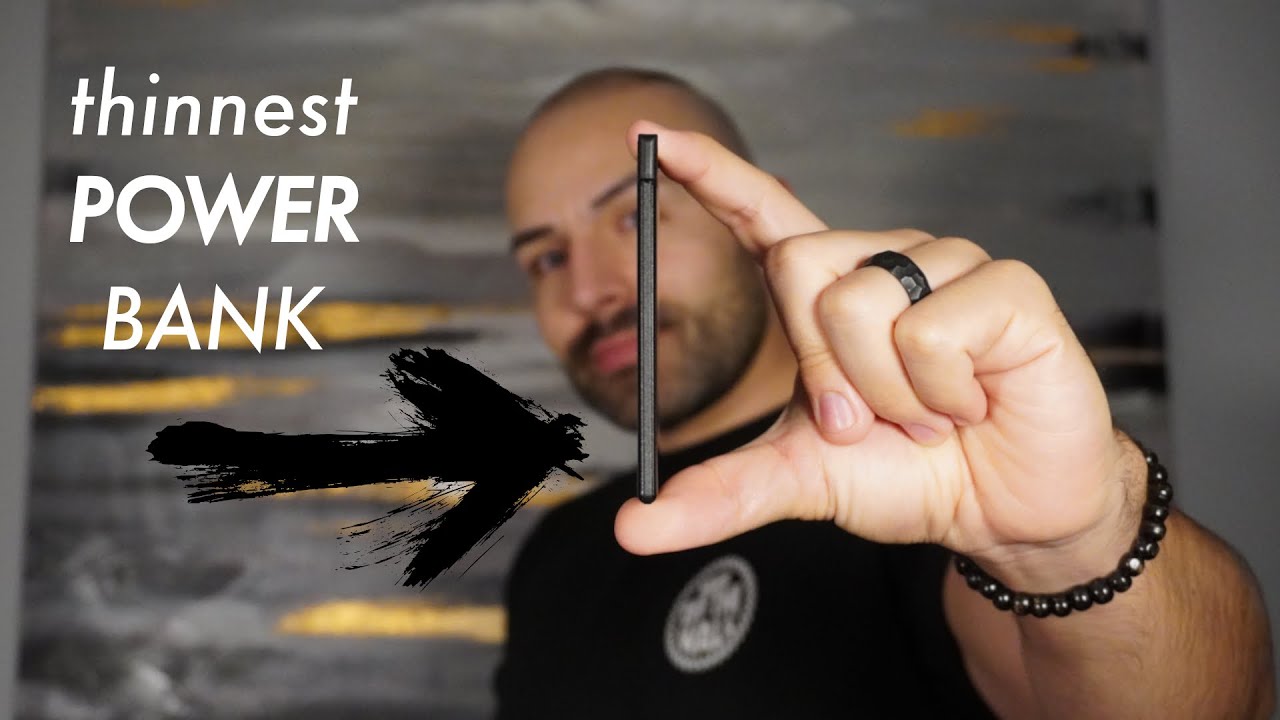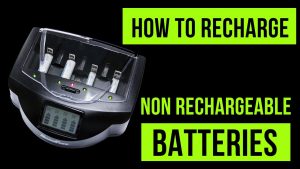A power bank, also known as a portable charger or external battery pack, is a compact device designed to store electrical energy and provide it to various electronic devices when needed. Its primary function is to recharge smartphones, tablets, laptops, and other portable gadgets when access to a traditional power source is unavailable.
In This Article
Here are Some Common Uses of Power Banks
- Charging Mobile Devices On-the-Go: Power banks are invaluable for individuals who travel frequently or spend long hours away from conventional power outlets. Whether you’re on a hike, commuting, or attending outdoor events, a power bank ensures that your smartphone or tablet remains powered throughout the day.
- Emergency Power Backup: During power outages or emergencies, power banks serve as a reliable backup power source. They can keep essential devices like smartphones operational, allowing you to stay connected, access emergency services, or communicate with loved ones during critical situations.
- Extended Outdoor Activities: Outdoor enthusiasts, such as campers, hikers, and backpackers, rely on power banks to keep their electronic devices charged while exploring remote locations. Whether it’s using GPS navigation, capturing photos and videos, or staying connected with others, a power bank ensures uninterrupted access to technology.
- Traveling: When traveling to destinations where power outlets are scarce or incompatible with your devices, a power bank becomes a travel essential. It eliminates the need to search for charging stations and provides peace of mind knowing that your devices won’t run out of battery while you’re exploring new places.
- Business and Work: Professionals who are constantly on the move or attend meetings throughout the day benefit from having a power bank to ensure their devices remain operational. Whether it’s making important calls, accessing documents, or sending emails, a charged device is crucial for staying productive.
- Entertainment and Leisure: Power banks enable users to enjoy extended periods of entertainment, such as watching movies, listening to music, or playing games, without worrying about draining their device’s battery. This is particularly useful during long flights, road trips, or outdoor gatherings.
Power banks have become a ubiquitous accessory for anyone who relies on their electronic devices throughout the day. Whether you’re traveling, working remotely, or simply out and about, a power bank can provide a valuable backup source of power when you need it. In this article, we’ll take a closer look at power banks and explore what you need to know about these portable chargers.
What is a Power Bank?
A power bank, also known as a portable charger, is a device that stores electrical energy in its internal battery and allows you to recharge other devices on the go. Power banks come in various shapes, sizes, and capacities, and are compatible with a wide range of electronic devices, including smartphones, tablets, laptops, and cameras.
How Do Power Banks Work?
Power banks work by storing electrical energy in their internal battery when they’re connected to a power source, such as a wall outlet or a USB port. Once fully charged, they can be disconnected from the power source and used to charge other devices. Most power banks have built-in circuitry that regulates the output voltage and current to ensure that your devices are charged safely and efficiently.
Types of Power Banks
There are several types of power banks available on the market, each with its own unique features and benefits. Here are some of the most common types of power banks:
- Standard Power Banks
Standard power banks are the most common type of power banks available on the market. They’re designed to charge smartphones and other small electronic devices, and typically have a capacity of between 2000mAh and 10000mAh.
- High Capacity Power Banks
High capacity power banks are designed to charge larger devices, such as tablets and laptops, and typically have a capacity of between 10000mAh and 50000mAh.
- Solar Power Banks
Solar power banks are designed to charge your devices using the power of the sun. They’re perfect for outdoor enthusiasts and those who spend a lot of time in areas with limited access to power outlets.
How to Use Power Bank for The First Time
Using a power bank for the first time is a straightforward process. Here’s a step-by-step guide:
- Read the Manual: Before using your power bank, carefully read the user manual provided by the manufacturer. This will provide specific instructions and safety precautions relevant to your particular model.
- Charge the Power Bank: Most power banks come partially charged but it’s recommended to fully charge them before the first use. Connect the power bank to a wall charger using the provided USB cable. Plug the charger into a power outlet and allow the power bank to charge until it reaches full capacity. The charging time varies depending on the capacity of the power bank and the charging speed.
- Check the Indicator Lights: Many power banks feature indicator lights that display the battery level or charging status. Make sure to familiarize yourself with these indicators as they provide valuable information about the power bank’s status.
- Choose the Right Cable: Determine which cable is compatible with your device(s). Power banks usually come with USB ports, so you’ll need a USB cable that matches the charging port of your device (e.g., micro USB, USB-C, Lightning).
- Connect Your Device: Once the power bank is fully charged, disconnect it from the wall charger. Then, connect one end of the appropriate USB cable to the power bank’s output port and the other end to your device’s charging port.
- Turn On the Power Bank (If Necessary): Some power banks have a power button that needs to be pressed to initiate charging. If your power bank has a power button, press it to start charging your device. If there’s no power button, the charging process will begin automatically once the device is connected.
- Monitor Charging: Keep an eye on your device’s battery level to ensure it’s charging properly. You can also check the power bank’s indicator lights to confirm that it’s supplying power to your device.
- Disconnect Devices When Fully Charged: Once your device is fully charged, disconnect it from the power bank to avoid overcharging. Some power banks may automatically stop supplying power when the device is fully charged, but it’s a good practice to disconnect it manually.
- Store Properly: When not in use, store your power bank in a cool, dry place away from direct sunlight and extreme temperatures. This helps maintain its performance and prolongs its lifespan.
By following these simple steps, you can effectively use your power bank for the first time and ensure reliable portable power for your devices whenever you need it.
Factors to Consider When Choosing a Power Bank
Choosing the right power bank for your needs can be a daunting task, especially with so many options available on the market. Here are some of the key factors to consider when choosing a power bank:
- Capacity
The capacity of a power bank is one of the most important factors to consider. It determines how much charge the power bank can store and how many times it can recharge your devices. Generally, the higher the capacity, the more expensive the power bank will be.
- Number of Ports
The number of ports on a power bank determines how many devices you can charge at once. If you need to charge multiple devices at the same time, look for a power bank with multiple ports.
- Output Voltage and Current
The output voltage and current of a power bank determine how quickly your devices will charge. Look for a power bank with a high output voltage and current if you need to charge your devices quickly.
- Size and Weight
The size and weight of a power bank are important if you’re planning to carry it with you throughout the day. Look for a power bank that’s lightweight and compact if you need to carry it in your pocket or bag.
Trending Today
How to Use a Power Bank
Using a power bank is easy. Here are the basic steps:
- Charge your power bank fully before using it for the first time.
- Connect your device to the power bank using a charging cable.
- Turn on the power bank if it has an on/off switch.
- Wait for your device to charge fully.
Conclusion
Power banks are a valuable accessory for anyone who relies on their electronic devices throughout the day. Whether you’re a busy professional, a student, or an avid traveler, a power bank can provide the backup power you need to stay connected on the go. With so many different types of power banks available, it’s important to choose the one that’s right for your needs.
When selecting a power bank, consider factors such as capacity, number of ports, output voltage and current, and size and weight. By taking these factors into account, you can find a power bank that meets your specific needs and budget.
Once you’ve chosen the right power bank for your needs, using it is simple. Charge your power bank fully before using it for the first time, and then connect your devices using a charging cable. Many power banks also have built-in LED lights that indicate the battery level and charging status.
Overall, power banks are a versatile and essential accessory for anyone who relies on their electronic devices throughout the day. By choosing the right power bank and following a few basic steps, you can stay connected and productive no matter where your day takes you.






















